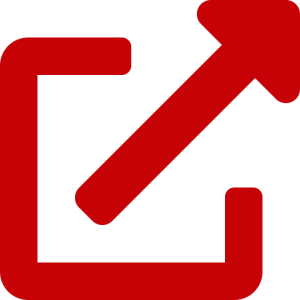The traditional linear model of industrial design—take, make, dispose—has reached its environmental and economic limits. In response, the circular economy offers a revolutionary approach that prioritizes resource efficiency, waste reduction, and product lifecycle extension.
By embedding circular principles into industrial design, manufacturers and product developers can create systems that are not only environmentally sustainable but also economically viable in the long term.
What Is a Circular Economy?
A circular economy is an economic system aimed at eliminating waste and continuously using resources. Unlike the linear model, it operates in closed loops where:
-
Products are designed for longevity
-
Materials are reused or recycled
-
Waste becomes a valuable input for new production
In the context of industrial design, it means creating products and systems that are easy to repair, upgrade, and disassemble—keeping materials in use as long as possible.
Core Principles of Circular Industrial Design
♻️ 1. Design for Durability
Products must withstand long-term use. Materials are chosen based on strength, recyclability, and resistance to wear.
🔧 2. Modular and Repairable Components
A product designed with replaceable parts is easier to repair, reducing the need for total replacement.
🔄 3. Closed-Loop Production
Waste from one process becomes the raw material for another, forming a self-sustaining cycle.
🧩 4. Product-as-a-Service (PaaS)
Instead of selling products, companies lease or rent them—taking responsibility for maintenance, return, and recycling.
Why Circular Design Matters in Industry
✅ Environmental Impact
Manufacturing accounts for a significant share of global carbon emissions and raw material use. Circular design directly addresses these issues.
✅ Resource Scarcity
Natural resources such as rare earth metals and clean water are limited. Circular systems optimize their use and extend availability.
✅ Business Resilience
Companies that embrace circularity are better prepared for regulatory shifts, price volatility, and supply chain disruptions.
Applications of Circular Economy in Industrial Sectors
🏭 Automotive Industry
Manufacturers like Renault and BMW design vehicles with recyclable materials and modular components, allowing easier disassembly and reuse.
🛠️ Electronics and Appliances
Brands like Fairphone and Dell design phones and laptops that can be easily upgraded or repaired—reducing e-waste and increasing product lifespan.
🧼 Consumer Goods
Unilever and Procter & Gamble adopt refillable packaging systems, cutting down plastic usage and production costs.
Circular Design Tools and Techniques
🛠️ Life Cycle Assessment (LCA)
Analyzes environmental impact from raw material extraction to disposal, helping designers make more sustainable choices.
📐 Cradle-to-Cradle (C2C)
A design framework that ensures products are either biologically degradable or technically recyclable.
🔄 Material Flow Analysis (MFA)
Maps material and energy flows within production processes to identify inefficiencies and waste reduction opportunities.
Challenges in Adopting Circular Design
❌ Legacy Systems
Many current manufacturing setups are built for linear production, requiring expensive overhauls for circular transitions.
❌ Consumer Behavior
Users are accustomed to fast, disposable products. Shifting mindsets toward repair and reuse takes time and education.
❌ Supply Chain Complexity
Ensuring that suppliers align with circular principles can be difficult, especially in globalized industries.
Government and Policy Support
Governments worldwide are introducing regulations and incentives to encourage circular design in industries:
-
European Union: The Circular Economy Action Plan pushes for ecodesign, right to repair, and waste reduction.
-
Japan: Implements circularity through the “3R” strategy—Reduce, Reuse, Recycle.
-
Indonesia: Integrating circular economy into its National Industrial Strategy with a focus on sustainable manufacturing zones.
Future of Industrial Design in the Circular Economy
🔮 Digital Twin Integration
By simulating product usage and material flows, designers can refine circular strategies before production begins.
🌐 Blockchain for Traceability
Digital ledgers track materials through the supply chain, ensuring transparency in recycling and reuse.
🤖 AI-Driven Optimization
Artificial intelligence helps optimize material selection, predict wear-and-tear, and suggest repair schedules.
Case Study: Philips Lighting’s Circular Approach
Philips redefined its business model by offering lighting as a service. Instead of selling light bulbs, they lease complete lighting systems to clients like airports and factories.
They take back and refurbish old systems, drastically cutting material use while ensuring product consistency. This shift:
-
Reduced waste by over 60%
-
Improved client retention
-
Strengthened the brand’s green credentials
Getting Started: Circular Thinking in Design Teams
-
Map Product Lifecycle
Understand where waste and inefficiencies occur. -
Choose Circular Materials
Prioritize renewable, recycled, or recyclable resources. -
Design for Disassembly
Make it easy to take products apart for repair or recycling. -
Plan End-of-Life Scenarios
Determine how products will be reused, repurposed, or reabsorbed into production. -
Engage Stakeholders
Educate supply chain partners, clients, and users on the benefits of circular design.
Circular economy in industrial design isn’t just a sustainability buzzword—it’s a necessary shift toward smarter, more resilient manufacturing systems. As environmental concerns and regulatory pressures grow, circular design becomes a competitive advantage.
By integrating circular principles into product development, companies can reduce waste, cut costs, and build stronger relationships with eco-conscious consumers. The future of industry lies in the loop, not the line.










